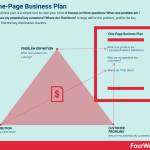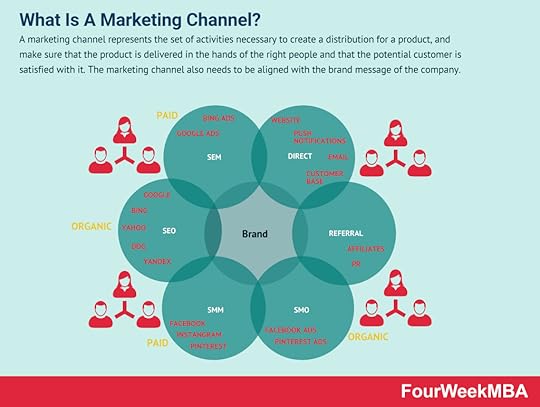Plan vs. strategy


A strategy determines what an organization needs to do to meet business objectives. A plan outlines how the strategy will be executed. It may take the form of an outline, scheme, program, blueprint, or layout.
Understanding strategiesAt the most fundamental level, strategies determine how a business will achieve its goals.
The best strategies are robust, flexible, and adaptable when circumstances change. Effective strategies allow the business to build critical momentum and secure a competitive advantage.
Strategies are often prepared when collaboration, innovation, and creativity are of the utmost importance.
They tend to facilitate healthy debate from both sides of the argument and clarify how a company will further its mission and vision.
Some of the key components of a good strategy include:
Asking the right questions.Learning lessons from the past.Future predictions.Committing to change.Evolving when necessary.Determining how to integrate, andAnalyzing potential pathways.Note that every company should have an overarching strategy and not a set of strategies, plural.
Strategy encompasses a set of choices that determine where the company wants to be, how it intends to get there, and the skills, expertise, and systems that will allow it to win.
Tesla’s ambitions to become the most compelling car company in the world and accelerate the shift toward affordable, sustainable vehicles have been supported by one strategy.
The company entered the EV market at the premium end and is progressively reaching more price-conscious consumers via higher unit volume and lower prices.
Understanding plansPlans dictate how certain goals are achieved and tend to be final. In other words, an unsuccessful plan is more likely to be scrapped and a new plan devised.
Since plans are more difficult to adjust, they tend to take longer to develop because organizations work harder to ensure every detail is correct.
Most plans include detailed information on the following:
The tasks and activities that need to be executed.Roles and responsibilities.A task and activity schedule, andClarification on how the strategy can be performed on time and within budget. This incorporates risk, quality, resource, stakeholder, change, and financial management, among other disciplines.Plans are useful when efficiency and timelines are important. They provide a coherent framework that enables the organization to move in the same direction and establish certain milestones that must be met along the way.
Plans also eliminate false confidence at the organizational level and increase transparency at the employee level as they leave no room for assumptions.
Various types of plans can support different parts of the strategy. These include financial, tactical, contingency, succession, and operational plans.
Key takeaways:A strategy determines what an organization needs to do to meet business objectives, while plans clarify how the strategy will be carried out.The best business strategies are robust, flexible, and adaptable when circumstances change. They are prepared when collaboration, innovation, and creativity are of the utmost importance.Plans dictate how certain goals are achieved and are more concrete in nature. Unlike a strategy that can be adjusted over time, plans need to be correct from the outset and if unsuccessful, it is better to move to Plan B than make alterations to Plan A.Key Components of a Business Model Your UVP is the exclusive feature or benefit you offer to your customers. It could be anything at all. If you offer a service, it could be “100% pay after satisfaction”. It could be a time factor offers. Say you provide a service that reviews CV. Your UVP could be “Get a revamped résumé in 24 hours”. This makes you stand out from every other person offering that service, as your unique offering is the ability to deliver in 24 hours. Your slogan could also be your UVP, as it automatically gives your audience what to expect from you.
Your UVP is the exclusive feature or benefit you offer to your customers. It could be anything at all. If you offer a service, it could be “100% pay after satisfaction”. It could be a time factor offers. Say you provide a service that reviews CV. Your UVP could be “Get a revamped résumé in 24 hours”. This makes you stand out from every other person offering that service, as your unique offering is the ability to deliver in 24 hours. Your slogan could also be your UVP, as it automatically gives your audience what to expect from you.  The cost structure is one of the building blocks of a business model. It represents how companies spend most of their resources to keep generating demand for their products and services. The cost structure together with revenue streams, help assess the operational scalability of an organization.
The cost structure is one of the building blocks of a business model. It represents how companies spend most of their resources to keep generating demand for their products and services. The cost structure together with revenue streams, help assess the operational scalability of an organization. A pricing strategy or model helps companies find the pricing formula in fits with their business models. Thus aligning the customer needs with the product type while trying to enable profitability for the company. A good pricing strategy aligns the customer with the company’s long-term financial sustainability to build a solid business model.
A pricing strategy or model helps companies find the pricing formula in fits with their business models. Thus aligning the customer needs with the product type while trying to enable profitability for the company. A good pricing strategy aligns the customer with the company’s long-term financial sustainability to build a solid business model.  In corporate finance, the financial structure is how corporations finance their assets (usually either through debt or equity). For the sake of reverse engineering businesses, we want to look at three critical elements to determine the model used to sustain its assets: cost structure, profitability, and cash flow generation.
In corporate finance, the financial structure is how corporations finance their assets (usually either through debt or equity). For the sake of reverse engineering businesses, we want to look at three critical elements to determine the model used to sustain its assets: cost structure, profitability, and cash flow generation.  Technological modeling is a discipline to provide the basis for companies to sustain innovation, thus developing incremental products. While also looking at breakthrough innovative products that can pave the way for long-term success. In a sort of Barbell Strategy, technological modeling suggests having a two-sided approach, on the one hand, to keep sustaining continuous innovation as a core part of the business model. On the other hand, it places bets on future developments that have the potential to break through and take a leap forward.
Technological modeling is a discipline to provide the basis for companies to sustain innovation, thus developing incremental products. While also looking at breakthrough innovative products that can pave the way for long-term success. In a sort of Barbell Strategy, technological modeling suggests having a two-sided approach, on the one hand, to keep sustaining continuous innovation as a core part of the business model. On the other hand, it places bets on future developments that have the potential to break through and take a leap forward.  A distribution channel is the set of steps it takes for a product to get in the hands of the key customer or consumer. Distribution channels can be direct or indirect. Distribution can also be physical or digital, depending on the kind of business and industry.
A distribution channel is the set of steps it takes for a product to get in the hands of the key customer or consumer. Distribution channels can be direct or indirect. Distribution can also be physical or digital, depending on the kind of business and industry. A marketing channel represents the set of activities necessary to create a distribution for a product and make sure that the product is delivered in the hands of the right people and that the potential customer is satisfied with it. The marketing channel also needs to be aligned with the brand message of the company.
A marketing channel represents the set of activities necessary to create a distribution for a product and make sure that the product is delivered in the hands of the right people and that the potential customer is satisfied with it. The marketing channel also needs to be aligned with the brand message of the company.Other related business frameworks:
AIDA ModelAnsoff MatrixBusiness AnalysisBusiness Model CanvasBusiness Strategy FrameworksBlue Ocean StrategyBCG MatrixPorter’s Five ForcesVRIO FrameworkAdditional resources:
Business ModelsBusiness StrategyDistribution ChannelsGo-To-Market StrategyMarketing StrategyMarket SegmentationNiche MarketingThe post Plan vs. strategy appeared first on FourWeekMBA.



